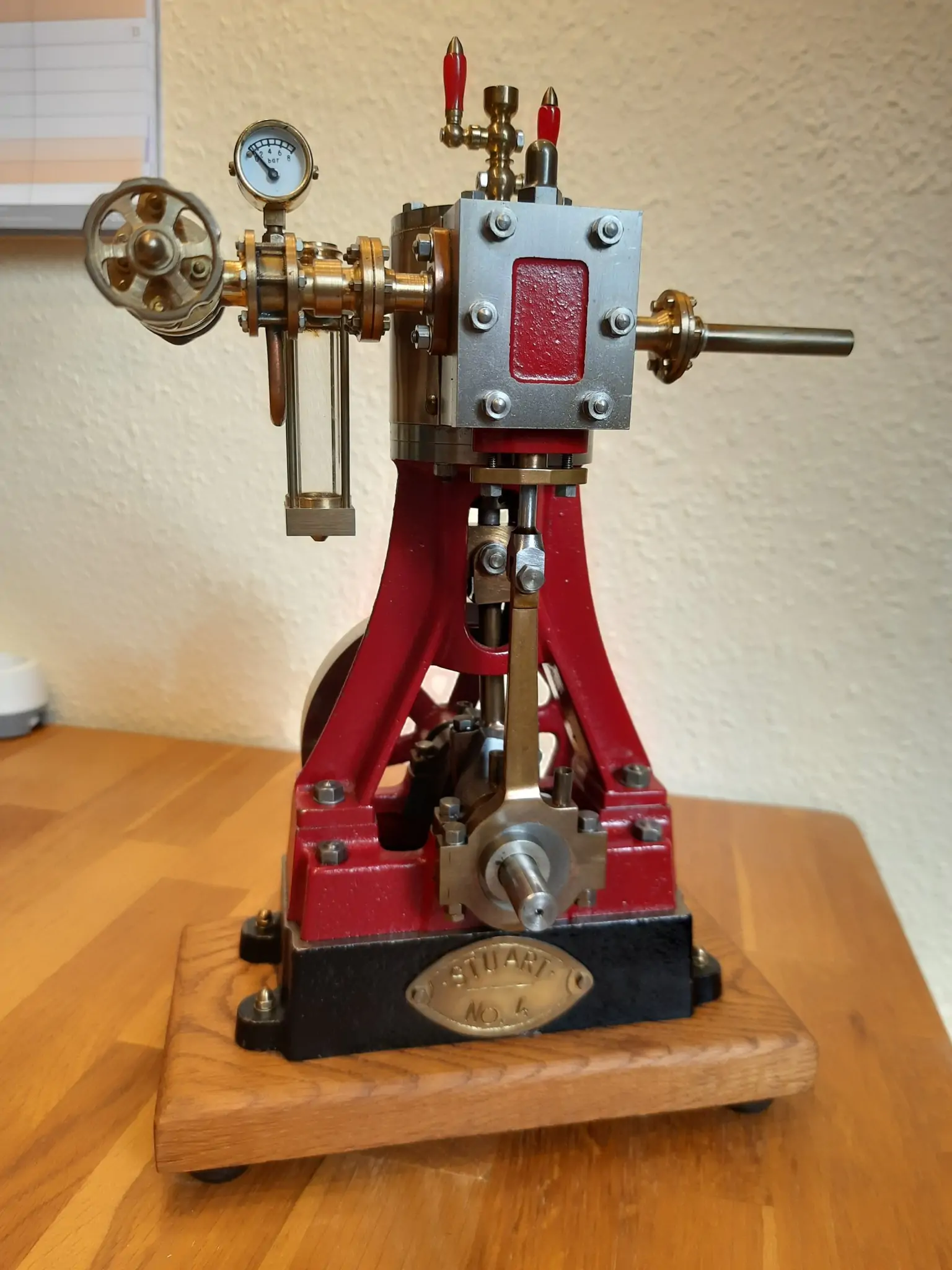Dec. 19 & 20, 2025:
FBI agent, John Guandolo perfectly explained Islam in 3 minutes.
video – 00:02:49 – https://www.youtube.com/watch?v=7BDn0ueW6xc
(worth the 11 minuteas it takes to watch – jlr)
America’s Future – If Gavin Newsom becomes President of the United States
https://libsarenuts.substack.com/p/americas-future
The auto industry just quit California!
video – 00:10:54 – https://www.youtube.com/watch?v=Zr55hPXyGt4
(This is worth reading – jlr)
Ten Dollar Gasoline: Coming Soon to California
https://pjmedia.com/eric-florack/2025/12/19/ten-dollar-gasoline-its-in-our-future-n4947283
Let’s be more specific: $10 gas in Gov. Gavin Newsom’s California? Yeah, that does sound a bit more likely, doesn’t it?… Chevron’s CEO Mike Wirth decided to shut down operations in California. He texted the governor, saying, “I’d like to tell you about it before you read about it.” Common courtesy, right?
After 140 some-odd years, a $300 billion company, with thousands of jobs on the line, is throwing in the towel, deciding to leave the state. The consequences of this are enormous. Newsom’s response? “I don’t need to talk about it. I’m good.”…If you add in the Phillips 66 operation in LA County and Valero up in the Bay area, a total of three refineries are gone. That’s about 20% of the total gasoline supply in the state.
GOP Congressmen Starting ‘Sharia Free America Caucus’ to Counter Islamic Law and Protect the Constitution
https://gellerreport.com/2025/12/gop-congressmen-starting-sharia-free-america-caucus-to-counter-islamic-law-and-protect-the-constitution.html/
Somali “Staggering, Industrial-Scale” FRAUD in ONE STATE Far Exceeds Somalia’s ENTIRE GDP
https://gellerreport.com/2025/12/somali-staggering-industrial-scale-fraud-in-one-state-far-exceeds-somalias-entire-gdp.html/
Milwaukee judge found guilty of obstruction for allegedly helping illegal migrant evade arrest
https://justthenews.com/government/courts-law/milwaukee-judge-found-guilty-obstruction-allegedly-helping-illegal-migrant
Dugan was convicted of one felony count of obstruction and acquitted of concealing an individual to prevent arrest.
Guilty!!!
https://oldnfo.substack.com/p/guilty
Now if they would do the same to these protesters that think they are above the law…
redux
You say that like it is a bad thing.
https://miguelgg.substack.com/p/you-say-that-like-it-is-a-bad
(Look at the number of federal employees – appx. 1% of the total US population currently works for the government – jlr)
Over the Summer Violent Brown University Antisemites Demanded Cameras Be Disabled To Protect “Protesters”
https://gellerreport.com/2025/12/over-the-summer-violent-brown-univ-antisemites-demanded-cameras-be-disabled-to-protect-protesters.html/
FIVE TERRORISTS ARRESTED En Route to Bondi Beach to Slaughter Jewish Mourners at Vigil For Victims of Islamic Massacre
https://gellerreport.com/2025/12/jewish-vigil-targeted-five-terrorists-arrested.html/
rcd via e-mail
You Won’t Believe What the Australian PM’s Solution to the Bondi Beach Terror Attack Is
https://townhall.com/tipsheet/dmitri-bolt/2025/12/19/aussie-government-to-collecct-and-destroy-hundreds-of-thousands-of-firearms-n2668186
The Australian Prime Minister has announced their solution to the Bondi Beach terror attack in Sydney, Australia. They will repeat what the country did in ***1996, and collect and destroy “hundreds of thousands of firearms.” Never mind the threat of radical Islam, jihad, or antisemitism.
If American conservatives need a reminder on why our Second Amendment should be protected, this is it.
UPDATE
A reporter asked Prime Minister Albanese whether radical Islam posed Australia’s greatest domestic security threat, and he replied that neo-Nazis, not Islamist extremism, were the primary concern.
video – 00:01:22 – https://twitter.com/i/status/2001942914717597942
San Francisco Hillel Set Aflame, Building Destroyed, Shabbat and Chanukah Events Canceled
https://gellerreport.com/2025/12/san-francisco-hillel-set-aflame-building-destroyed-shabbat-and-chanukah-events-canceled.html/
Hillel is the world’s largest Jewish campus organization, Last night, the San Francisco chapter was set on fire.
201 Democrats Vote AGAINST Bill Keeping Gangbanger Illegals Off U.S. Streets
https://gellerreport.com/2025/12/201-democrats-vote-against-bill-keeping-gangbanger-illegals-off-u-s-streets.html/
IMPEACHMENT MADNESS: Democrats Prove They Have No Real Interest in Governing
https://amac.us/newsline/politics/impeachment-madness-democrats-prove-they-have-no-real-interest-in-governing/
Grinch Christmas card pulled from supermarket chain after transgender activist complains
https://www.bizpacreview.com/2025/12/19/grinch-christmas-card-pulled-from-supermarket-chain-after-transgender-activist-complains-1611320/
“The phrase ‘identifying as’ is an anti-trans dogwhistle and has long been used as a derogatory way of describing trans people and invalidating their gender, whereby it suggests a person’s gender being anything other than what fits neatly into the cis male/female binary is something people can ‘choose’.”…he believes that the card “belittles the identity of trans and non-binary people”.
Trans Sec Sean Duffy’s daughter unloads on ‘unconstitutional’ TSA after ridiculous experience
https://www.bizpacreview.com/2025/12/19/trans-sec-sean-duffys-daughter-unloads-on-unconstitutional-tsa-after-ridiculous-experience-1611301/
“I nearly missed my flight this morning after the TSA made me wait 15 minutes for a pat-down because I’m pregnant and didn’t feel like getting radiation exposure from their body scanner,”…“The agents were passive-aggressive, rude, and tried to pressure me and another pregnant woman into just walking through the scanner because it’s ‘safe.’”…“After finally getting the absurdly invasive pat-down, I barely made my flight. All this for an unconstitutional agency that isn’t even good at its job,”…“Perhaps things would have gone more smoothly if I’d handed over my biometric data to a random private company (CLEAR). Then I could enjoy the special privilege of waiting in a shorter line to be treated like a terrorist in my own country.”…“Is this freedom? Travel, brought to you by George Orwell—and the privilege of convenience based solely on your willingness to surrender biometric data and submit to radiation exposure? The ‘golden age of transportation’ cannot begin until the TSA is gone,”
Trump DOJ slams door on welfare for illegal aliens, ends Clinton-era loophole draining taxpayer dollars
https://www.theblaze.com/news/trump-doj-slams-door-on-welfare-for-illegal-aliens-ends-clinton-era-loophole-draining-taxpayer-dollars
Trump Signs Historic $901B Defense Bill, Delivering Troop Pay Raise and Eliminating Woke Programs
https://istandforfreedom.com/trump-defense-bill-troop-raise/
West Coast, Messed Coast™ — 58 Reasons Why Blue Cities Are Circling the Drain
https://pjmedia.com/victoria-taft/2025/12/19/west-coast-messed-coast-58-reasons-why-blue-cities-are-circling-the-drain-n4947280
House Republican Considering Plan to Expel Ilhan Omar from Congress
https://www.westernjournal.com/house-republican-considering-plan-expel-ilhan-omar-congress/
“actively considering” forcing a vote to expel Omar,
Pete Hegseth Announces Plan to Restore George Washington’s Military Chaplain Corps to Its Former Glory
https://www.westernjournal.com/pete-hegseth-announces-plan-restore-george-washingtons-military-chaplain-corps-former-glory/
‘We Don’t Dispute’ It: Georgia 315k Vote Bombshell Blows a Big Hole in 2020’s ‘Most Secure Election’ Lie
https://redstate.com/rusty-weiss/2025/12/19/we-dont-dispute-it-georgia-315k-vote-bombshell-blows-a-big-hole-in-2020s-most-secure-election-lie-n2197283
A Georgia State Election Board investigation substantiated that Fulton County violated election rules in 2020 by failing to have poll workers sign required tabulation tapes for early votes in 36 out of 37 advanced voting precincts, affecting approximately 315,000 ballots.
AND
rcd vis e-mail
Fulton County Admits It ILLEGALLY CERTIFIED 315,000+ Ballots In 2020 Election!
https://wltreport.com/2025/12/19/breaking-fulton-county-admits-it-illegally-certified-315000/
315,000 and Trump lost Georga by 12,000 – Bet it will not make news at 11
Wife thinking outside the ice box
https://miguelgg.substack.com/p/wife-thinking-outside-the-ice-box
Damn, she knows her economics. She can squeeze a penny better than any locomotive.
Department of War: Done playing games.
https://miguelgg.substack.com/p/department-of-war-done-playing-games
Today, we hunted and we killed our enemies. Lots of them. And we will continue.
‘Murica and Fuck You.
AYSM???
DeKalb County Ends COVID-19 State of Emergency After Five Years, Sets Jan. 5, 2026 Office Return
https://istandforfreedom.com/dekalb-state-emergency-over/
Unhinged female absolutely pummels male employee at Planet Fitness in Florida
https://www.theblaze.com/news/female-caught-on-video-beating-up-male-planet-fitness-employee-florida
it apparently all started when the male employee told the female gym member to lower her voice or he’d call the police, he female “became irate,” balled her fists, and got in the male employee’s face — but the male pushed her away with both hands twice “in self-defense,”
video – 00:01:11 – https://www.youtube.com/watch?v=R4mFmo31WEY
Woman arrested for allegedly punching two NYPD officers during ‘mostly peaceful’ Tyre Nichols protest — and she’s reportedly released without bail
https://www.theblaze.com/news/woman-arrested-for-allegedly-punching-two-nypd-officers-during-mostly-peaceful-tyre-nichols-protest-and-shes-reportedly-released-without-bail
Fed Up with Islam, James Woods Issues Savage Statement That Will Offend Every Muslim on Earth, But Could Give Hope to Everyone Else
https://www.westernjournal.com/fed-islam-james-woods-issues-savage-statement-will-offend-every-muslim-earth-give-hope-everyone-else/
“…terrorists are not fringe actors or radicals; these are people following the dogma found in the Quran, which is clear in its call for Muslims to use violence in furtherance of their cause.”
When Gun Control Fails…The Government doubles the dosage of Gun Control.
https://miguelgg.substack.com/p/when-gun-control-fails
In Bondi Beach, it was only the terrorists and the useless police who had weapons. civilians were unarmed. Clearly the fault resides with the civilians who shall be even more disarmed so they can be kept safe from the terrorists by cops trained in Uvalde and Broward county.
Embedded video – 00:00:25
The most recent articles from Active Response Training – Weekend Knowledge Dump- December 19, 2025
https://www.activeresponsetraining.net/weekend-knowledge-dump-december-19-2025
Knowledge to make your life better. If you have some free time, check out some of these links this weekend.
Joyous Noel, part 3 – The last part, I think.
https://thelawdogfiles.substack.com/p/joyous-noel-part-3
he first two stories I did about the Välkkykettu flew out of my fingers, as I tried to keep up with the images darting through my mind, not knowing where the stories were going — only that I needed to get them on the screen before they went away.
This one — this one I sat down and deliberately plotted. I had an idea of what I wanted to say, and what I needed to write about to say it … but I’m not as happy with this one. It doesn’t have as much of the Old World, Northern European Fairy Tales feel as the first two.
Ah well. I suspect that my brain-squirrels have ADHD’d, and I’m about to get intensely focused on something entirely different.
I am mildly astonished that the Välkkykettu have taken off like they have — “Neo-folklore” is untapped territory for me — but I’m grateful none the less.
I’d like to point out that Sam Robb came up with the Välkkykettu, but they so very well illustrated a point I have been making for years — the point that childhood has become too safe, too nerfed — so I grabbed the Flickerfoxes and ran with them.
And you have read the results on these pages. Part 1 is here; and Part 2 is here, if this is your first time reading about the Välkkykettu.
Raconteur Press will publish a children’s book about the Flickerfoxes for Christmas 2026 — in the meantime if you enjoy these little scribbles, feel free to share them.
When you do, please remember to attribute them to me, of your kindness.
Dec 21, 2025:
Dumber, Sicker, & Poorer
https://www.theburningplatform.com/2025/12/19/dumber-sicker-poorer/
The chart below is a fascinating snapshot of the last 75 years in the demise of the American empire.

When you understand the working age population is 275 million and your friendly number fudgers at the BLS declare 103 million of them NOT IN THE LABOR FORCE, and hysterically declaring only 7.8 million Americans are unemployed, you understand what a fraudulent economy we have.
The reported 4.6% unemployment rate is complete and utter bullshit. In reality, it is north of 20%.
Jasmine Crockett Spirals Into Word Salad Answer When Cornered on Reparations
https://www.westernjournal.com/jasmine-crockett-spirals-word-salad-answer-cornered-reparations/
New Protest at the Kennedy Center Tells You Everything You Need to Know About the Left
https://redstate.com/nick-arama/2025/12/20/protest-at-kennedy-center-n2197336
visdeo – 00:01:00 – https://youtu.be/M9PXWCAvhaU
Mystery Solved: This Is What It Takes for Local Cops to Arrest Somebody at Portland ICE HQ
https://pjmedia.com/victoria-taft/2025/12/21/what-does-it-take-to-get-arrested-around-here-portland-police-finally-arrest-trantifa-outside-of-ice-hq-n4947348
Protesters can assault, mob, and chase reporters on the streets of Portland without fear of arrest, but a full-grown man punching a cop in the face in front of a crowd will get arrested.
Protesters can assault, mob, and chase reporters on the streets of Portland without fear of arrest, but a full-grown man punching a cop in the face in front of a crowd will get arrested.
video – 00:01:18 – https://twitter.com/i/status/2002253329053933761
USER WARNING! – not judging, just saying
Notes from the edge of civilization: December 21, 2025
https://www.collapselife.com/p/notes-from-the-edge-of-civilization-bcc
The article basically boils down to this: as sex toys get “smart,” they also get chatty.
Florida man says he ‘teleported’ into stolen BMW, blames ‘X-Men,’ thanks cop for rescuing him from ‘aliens’
https://www.theblaze.com/news/florida-man-bodycam-video-car-crash-aliens-teleport
Nothing to do with Deer: Sunday Country Second Amendment
https://wilderwealthywise.com/nothing-to-do-with-deer-sunday-country-second-amendment/
I say again, Let me make somethin’ perfectly clear, The Second Amendment has nothin’ to do with deer.
MP3 audio – 00:03:49 – https://wilderwealthywise.com/wp-content/uploads/2025/12/Nothin-to-do-with-Deer-v3.mp3
https://wilderwealthywise.com/music-collection/
About the Välkkykettu – A brief look into my mind.
https://thelawdogfiles.substack.com/p/about-the-valkkykettu
Some folks have asked if I mind if they write stories about the Välkkykettu1, and I don’t mind(ish) — but I thought that a brief post about what went through my mind as I created my own version of the character might be helpful.
Dec 22 & 23, 2025:
Re-examining “I’m Coming To Your House When Things Get Bad!”
https://paultmartin.com/blog/f/re-examining-im-coming-to-your-house-when-things-get-bad
https://paultmartin.com/blog/f/project-dealing-with-the-im-coming-to-your-house-crowd
(See the quotes after my sig line – JLR)
Charlie Kirk was right: How Islam is destroying the West
https://www.theblaze.com/shows/relatable/charlie-kirk-was-right-how-islam-is-destroying-the-west
Western nations are collapsing under the weight of mass migration, failed assimilation, demographic upheaval, and the growing alliance between Marxist and Islamist ideologies — a threat Charlie Kirk warned about with clarity long before his death.
California Faces Fuel Disaster As Refineries And Gas Stations Shut Down
https://www.zerohedge.com/energy/california-faces-fuel-disaster-refineries-and-gas-stations-shut-down
Gavin Newsom ‘s major refinery law, ABX2-1 (signed Oct 2024), gives the state power to mandate minimum fuel storage levels and control refinery maintenance to prevent price spikes, empowering the California Energy Commission (CEC) to stabilize supply. This builds on earlier efforts (like SB X1-2) creating an oil market watchdog (DPMO) to increase oversight, aiming to stop refiners from manipulating supply for profit, while also adding data reporting requirements for companies. In response, companies are shutting down refinery operations in the state.
video – 00:11:49 – https://youtu.be/Rdx2QbY9Dwo
California trying to KEEP oil and gas firms from LEAVING THE STATE
video – 00:08:29 – https://youtu.be/hXPhvM02KOY
You Thought You Could Leave California. Now They’re Following Your Money!!
video – 00:06:59 – https://www.youtube.com/watch?v=CKOU0hscYtg
Epstein Files Photos Hit Democrats Hard
https://gellerreport.com/2025/12/reckoning-epstein-files-photos-hit-democrats-hard.html/
They SCREAMED for the files, now they’re running for the hills.
House Votes to Criminalize Chemical Castration and Mutilation of Children
https://gellerreport.com/2025/12/house-votes-to-criminalize-chemical-castration-and-mutilation-of-children.html/
The bill passed with near-unanimous Republican support, with three Democrats—Reps. Henry Cuellar (TX), Don Davis (NC), and Vicente Gonzalez (TX)—voting in favor, while four Republicans opposed it.
“Conspiracy Theorists” Right Again on 2020 Georgia Election Irregularities
https://amac.us/newsline/politics/conspiracy-theorists-right-again-on-2020-georgia-election-irregularities/
( My pronouns are: I/told/you/so – jlr)
The Terrorists Are Inside the Gates
https://patriotpost.us/articles/123695
Tens of thousands of suspected or confirmed international terrorists have been identified within the borders of the United States.
The Stockholm Syndrome of the West
https://patriotpost.us/articles/123694
The West’s response to rising anti-Western violence has become grimly predictable: capitulate to antagonists and silence those who resist. A recent incident at a vigil for victims of the Bondi Beach terror attack crystallized this dynamic…populations are told that lowering expectations is the path to peace.
All I Want for Christmas Is Some Blue State Sanity
https://amac.us/newsline/politics/all-i-want-for-christmas-is-some-blue-state-sanity/
South Carolina Committee Defies Mayor’s Order to Remove Nativity Scene, Citing Supreme Court Precedent
https://istandforfreedom.com/south-caroline-order-nativity/
CUBA: Is Trump About to Do What No Other President Could?
https://pjmedia.com/vodkapundit/2025/12/22/cuba-is-trump-about-to-do-what-no-other-president-could-n4947376
The Democrats Need to Start Panicking About the Epstein Files
https://pjmedia.com/matt-margolis/2025/12/22/the-democrats-need-to-start-panicking-about-the-epstein-files-n4947385
Once Again, Another Nation’s Crime Surge Is Somehow America’s Fault
https://bearingarms.com/tomknighton/2025/12/22/once-again-another-nations-crime-surge-is-somehow-americas-fault-n1230998
…the New York Times has a whole story about the issue of American guns fueling crime in another country. This time, it’s Canada…Homicides have spiked in Canada in the past decade, most of them from guns. That’s roughly the same timeframe that Canada’s been on an anti-gun jihad and trampling all over gun ownership in the Great White North.
Bondi Beach Jihad Attack: Islamic State-Linked Plotters Recorded Antisemitic Videos — 15 Dead, 40 Wounded”
https://gellerreport.com/2025/12/bondi-beach-jihad-attack-islamic-state-linked-plotters-recorded-antisemitic-videos-15-dead-40-wounded.html/
AND
Australia’s Response to Islamic Terror: SUBMISSION – Sharia (Hate Speech Laws) and Gun Laws (Disarm Law Abiding Citizens)
https://gellerreport.com/2025/12/australias-response-to-islamic-terror-submission-sharia-law-hate-speech-and-gun-laws-disarm-the-law-abiding.html/
( I predict that because of (Sharia (Hate Speech Laws)), the politicians will retreat at the cries of Islamaphobia, and the laws will be withdrawn – jlr)
YALE COMPLETES INTELLECTUAL PURGE: Zero Republicans Across 27 Departments As Viewpoint Apartheid Replaces Academic Freedom
https://gellerreport.com/2025/12/yale-completes-intellectual-purge.html/
Yale has finally achieved liberal nirvana. According to a recent report from the Buckley Institute, there is now not a single Republican found across 27 of 43 departments at Yale University.
Insurance Giants Win, Everyday Americans Lose Under Obamacare’s Corrupt Regime
https://amac.us/newsline/politics/reminder-insurance-giants-win-everyday-americans-lose-under-obamacares-corrupt-regime/
It appears that even the Amish are seeing the handwriting on the wall with growing societal collapse!
video – 00:08:03 – https://youtu.be/6vmqjKA9Z4w
A little humor…To start the week! – An oldie but a goody!
https://oldnfo.substack.com/p/a-little-humor-421







